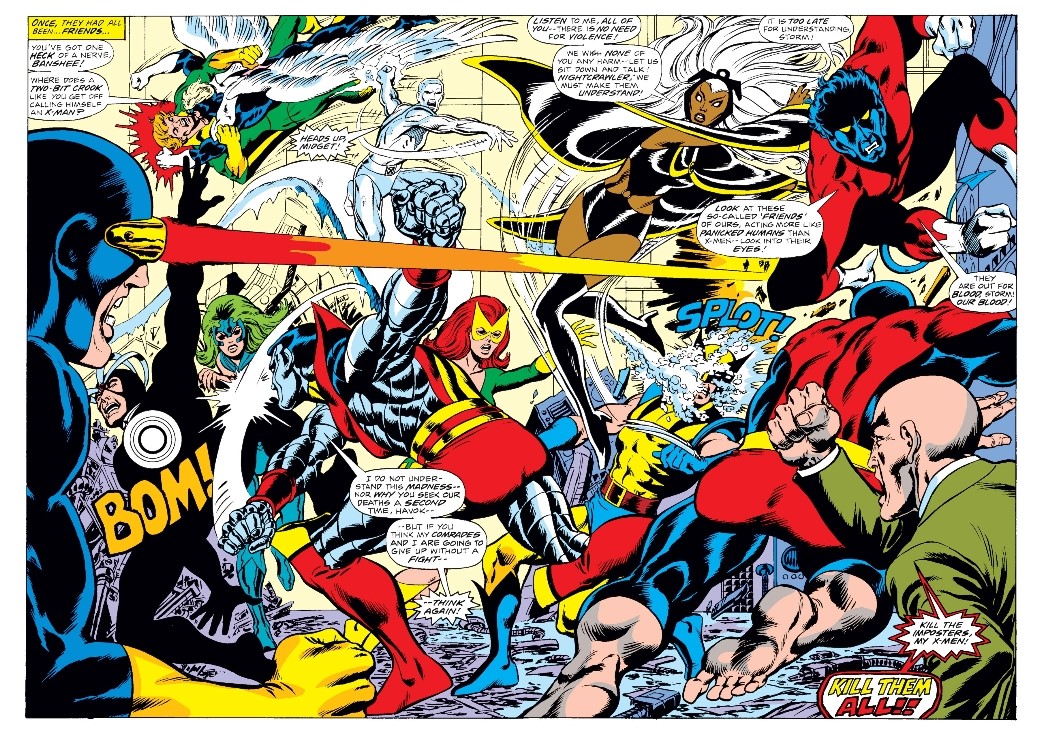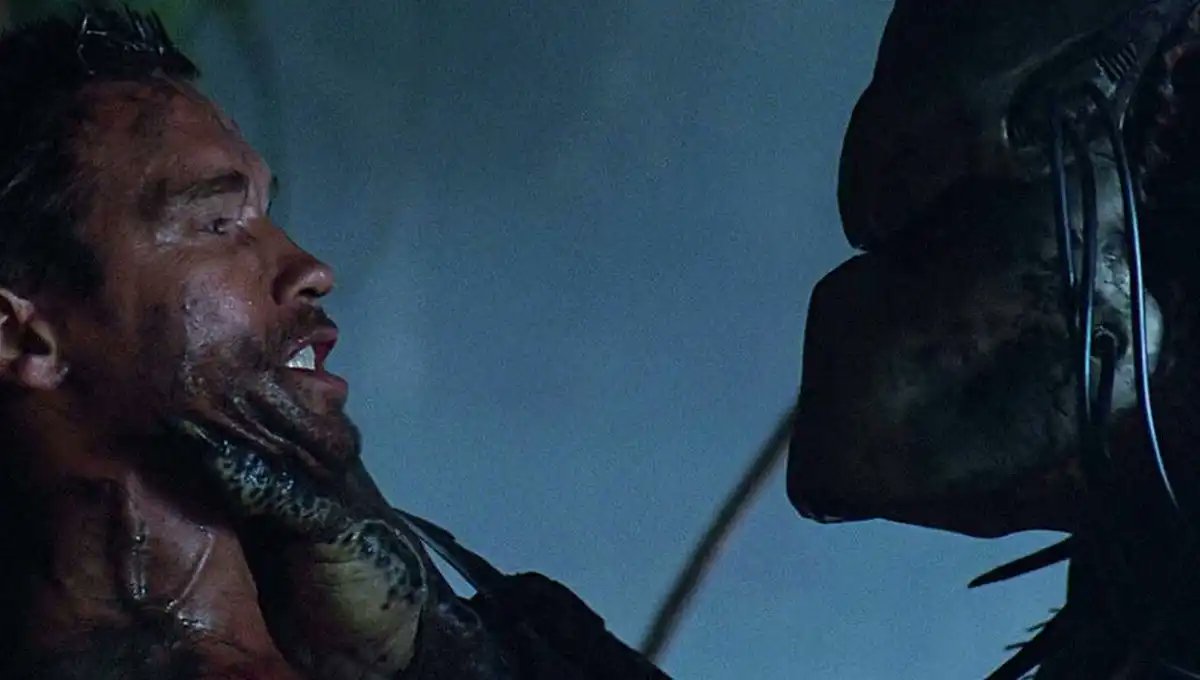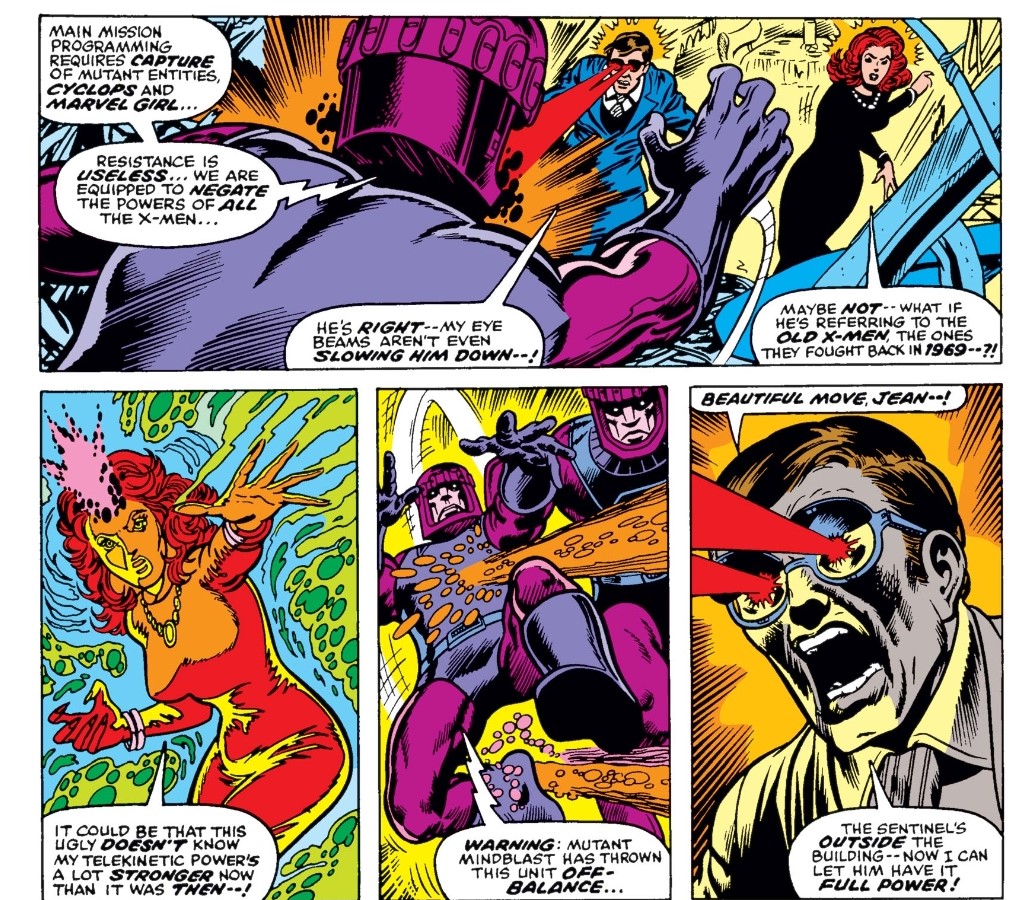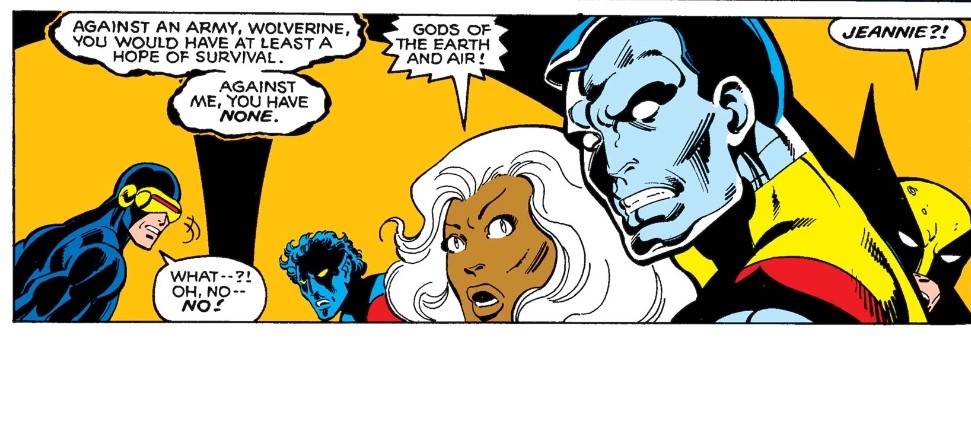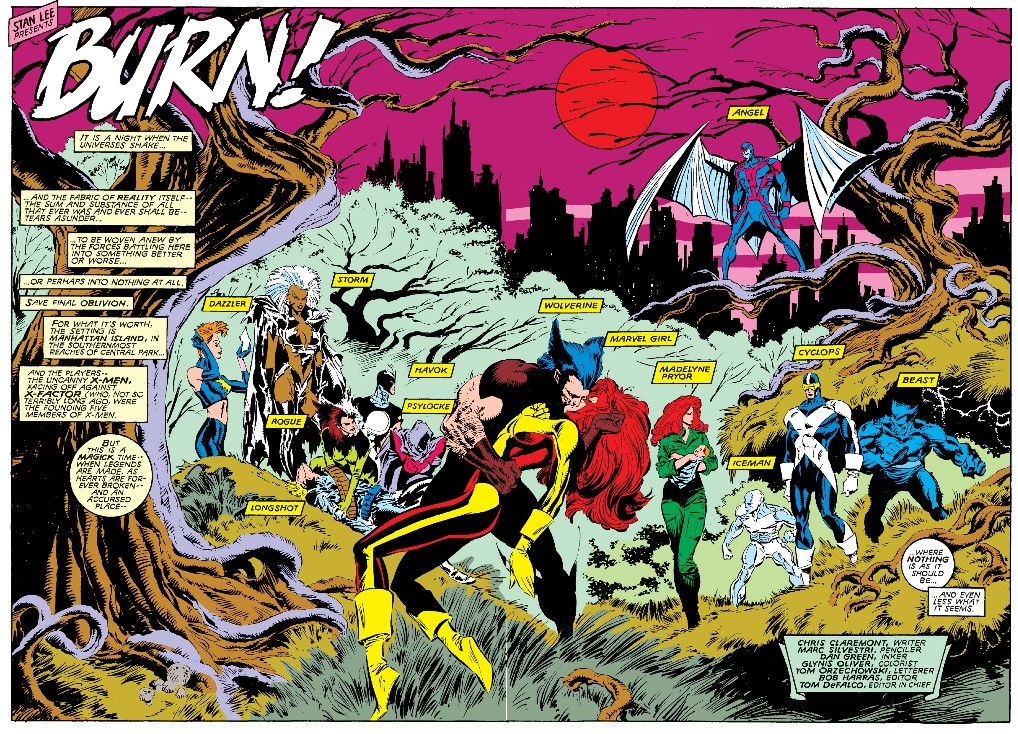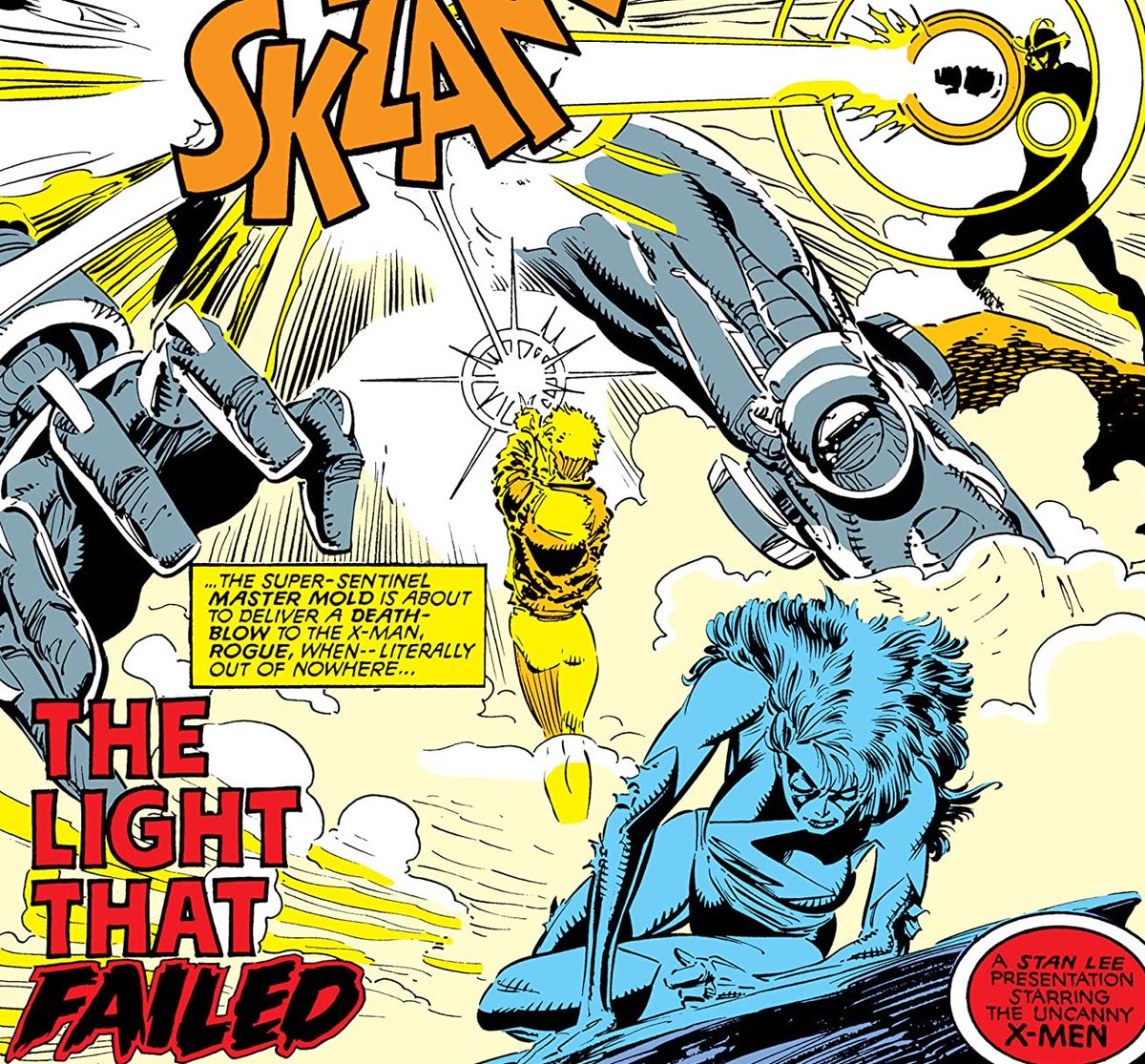Though Claremont tends to play things very loose with structure, in his early years on UXM he does quite frequently use a common screenwriting technique in which the plot reverses upon itself at roughly the halfway point of each story arc (large or small). #xmen 1/6
This technique is perhaps most visible in horror movies where the first half of the story is about the monster hunting the people, while the second half is invariably about the people hunting the monster. 2/6
We can see this approach very directly in the early years of the run where, for example, the Sentinels ambush the X-Men in NYC before being ambushed right back in their space station in the second half of that story. 3/6
We can also see more complex reversals, however, in stories like the Dark Phoenix Saga, which begins with the X-Men trying to save Jean, then reverses (suddenly) into the X-Men trying to survive Jean…and then trying to save her again. 4/6
In later portions of the run, however, we can see Claremont’s structure get more abstract, in large part because the lines between villain and hero got blurrier, and because the plots often involved more than one conflicting party (not just hero and villain). 5/6

 Read on Twitter
Read on Twitter